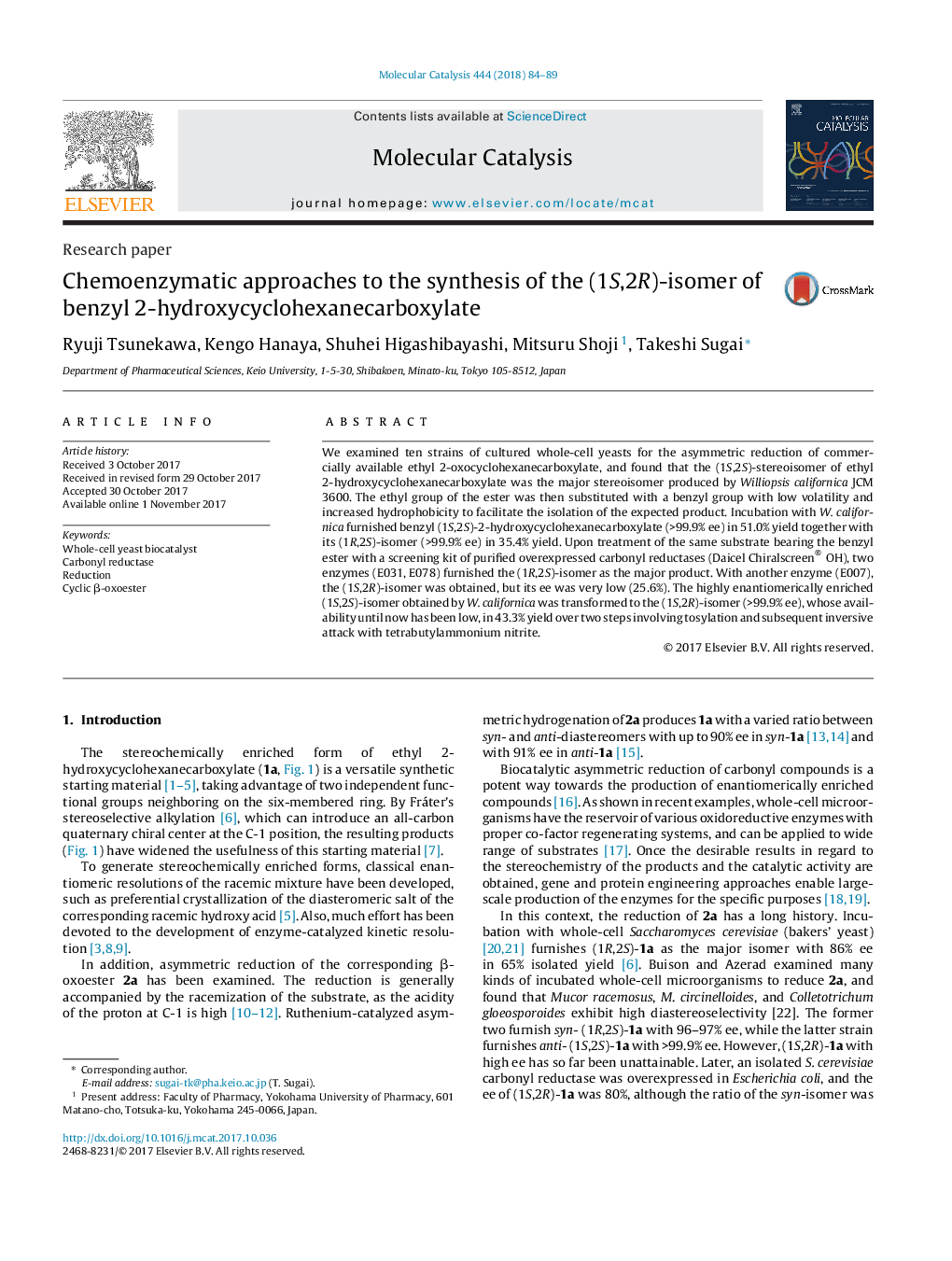| Article ID | Journal | Published Year | Pages | File Type |
|---|---|---|---|---|
| 8916997 | Molecular Catalysis | 2018 | 6 Pages |
Abstract
We examined ten strains of cultured whole-cell yeasts for the asymmetric reduction of commercially available ethyl 2-oxocyclohexanecarboxylate, and found that the (1S,2S)-stereoisomer of ethyl 2-hydroxycyclohexanecarboxylate was the major stereoisomer produced by Williopsis californica JCM 3600. The ethyl group of the ester was then substituted with a benzyl group with low volatility and increased hydrophobicity to facilitate the isolation of the expected product. Incubation with W. californica furnished benzyl (1S,2S)-2-hydroxycyclohexanecarboxylate (>99.9% ee) in 51.0% yield together with its (1R,2S)-isomer (>99.9% ee) in 35.4% yield. Upon treatment of the same substrate bearing the benzyl ester with a screening kit of purified overexpressed carbonyl reductases (Daicel Chiralscreen® OH), two enzymes (E031, E078) furnished the (1R,2S)-isomer as the major product. With another enzyme (E007), the (1S,2R)-isomer was obtained, but its ee was very low (25.6%). The highly enantiomerically enriched (1S,2S)-isomer obtained by W. californica was transformed to the (1S,2R)-isomer (>99.9% ee), whose availability until now has been low, in 43.3% yield over two steps involving tosylation and subsequent inversive attack with tetrabutylammonium nitrite.
Keywords
Related Topics
Physical Sciences and Engineering
Chemical Engineering
Catalysis
Authors
Ryuji Tsunekawa, Kengo Hanaya, Shuhei Higashibayashi, Mitsuru Shoji, Takeshi Sugai,
